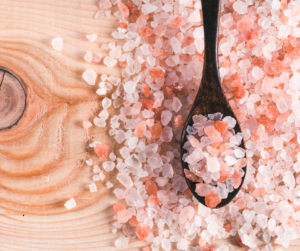By Claire Bacon, ACN, CNC
Cardiovascular disease… Do we really need another reminder of how prevalent it is? We hear it all the time – CVD is the #1killer of Americans. Despite all our medical advances, heart disease rates continue to climb. Have we become numb to the message? Maybe it’s not that Americans aren’t paying attention. Possibly, it’s just that we’re not recognizing the early signs of CVD. And we’re certainly not addressing the root causes of cardiac stress.
What is cardiac stress? Basically, it’s another way to refer to a heart struggling under pressure – for a variety of reasons. Years before someone has a heart attack, there could be a string of subtle reminders that something’s wrong: getting winded going up stairs, getting dizzy from squatting then standing up, rising blood pressure, or even poor recovery after a workout. How many times do these things happen and we just brush them off? Maybe we should pay closer attention to our cardiovascular health.

Conditions Related to Endothelial Dysfunction
Can I get your attention, please? There are many common conditions that find their root cause in endothelial dysfunction.
A brief list of cardiovascular conditions:
- Angina (chest pain and pressure, with or without blockage of the large arteries)
- High blood pressure
- Erectile dysfunction (ED)
- Atherosclerosis (plaque buildup)
- Raynaud’s phenomenon
- Myocardial infarction (heart attack)
- Ischemic stroke (due to clots) or Transient Ischemic Attack (TIA)
- Cognitive decline
- Alzheimer’s Disease
- Macular degeneration
- Broken heart syndrome

Now, do you see how everyone needs to learn about endothelial health?
How much healthier as a society would we be, if our health education taught us to address the root cause? Maybe we could turn these conditions around before they lead to cardiovascular disease, stroke and heart failure?
Let’s take a look at the specific anatomy so we’re all clear…
Functions of the Endothelium
Within the cardiovascular system, we have a miraculous yet hidden organ called the endothelium, or endothelial lining. Your endothelium is a vast organ that lines your arteries, blood vessels, capillaries, and lymphatic system. The endothelium actively keeps your blood and other fluids moving smoothly through your body.

The endothelial cells have many functions:
- They keep your blood vessels relaxed so that blood can flow through.
- They adjust to internal and external stimuli, like the pressure of your blood against the vessel walls, changes in emotional stress, and in response to medications.
- They react to changes in temperature. For example, constricting in cold weather, or dilating in response to heat or exercise to better circulate blood and oxygen.
- They adjust in permeability to allow immune cells to attack invaders.
- They produce substances called nitric oxide and prostacyclin. These keep your blood fluid and prevent it from clotting when it shouldn’t.
The glycocalyx (or EGX) is the surface layer of the endothelial cell membrane, which has a “hairy” appearance. These little hair-like protrusions serve as a protective barrier from blood flow for the endothelial cells.

The endothelial glycocalyx is a micro-thin, gel-like layer consisting of glycoproteins, proteoglycans, glycosaminoglycans, and glycolipids. These things coat the surface of the vascular endothelium. It is a selectively permeable barrier and a signal transducer. It functions with antioxidant, anti-coagulant, anti-adhesive, and anti-inflammatory properties.
The EGX is a key part of the cardiovascular system. Yet, most people have never heard of it!
When Something Goes Wrong… Endothelial Dysfunction
Endothelial dysfunction happens when something damages how your endothelial cells work. In other words, endothelial damage starts with a compromised endothelial glycocalyx (EGX). If you can imagine, in the presence of inflammation, these little hairs can lay down, be covered with plaque, or could be totally removed. Many medical conditions and lifestyle factors can cause endothelial dysfunction.
This is the key reason why cardiovascular disease is so rampant in our society. We’re missing the early warning signs!
It’s hard to say if you might have endothelial damage, because the EGX is not easily observed. It’s too small to be seen in a typical MRI imaging scan. If you see a cutting-edge specialist, you may have access to the CIMT Carotid Intima Media Thickness test, or the EndoPAT test. Both of these tests can help assess your cardiovascular health.

Other things you can do…
- Make an appointment with us to do a Heart Sound Recorder scan
- Stay on top of your routine bloodwork and check advanced inflammatory markers
- Get a Coronary Artery Calcium scan at your local imaging center – very important!
Top 10 Potential Causes of Endothelial Dysfunction
If you’re struggling with any of the above conditions, you’ll want to assess the entire list below, and address whatever is lacking in your health. Make sure you’ve got all these bases covered…
1. Infection
Especially as we saw with Covid, for many people their vascular health was never the same. A key strategy is to systematically work on upregulating the immune system. It’s up to the magic of your natural immune system to clear the infection once and for all.
2. Insulin resistance and high uric acid
This affects 88% of the American population, who are metabolically unwell. 88%!! All because of way too many cheap, sugary carbohydrates in our diet. We need to do better with our food supply for society as a whole! Let’s end the subsidies for wheat, corn, and soy and promote regenerative farms. This will go a long way to make healthy, organic food more affordable for everyone.

3. Antioxidant and polyphenol deficiencies
Top antioxidants include vitamins A, C, and E, quercetin, lipoic acid, and resveratrol. Put these together with the polyphenols you get from dark and brightly colored fruits and vegetables, and you’ve got a lot of natural anti-inflammatory and health-promoting actions going on!
4. Oxidative stress
On the flip side of #3, we’ve got a problem with excess oxidative stress, otherwise known as free radical damage. A certain amount of oxidative stress naturally occurs due to exercise and aging. But we get pushed over the top with more than the body can handle from chemical exposures and electromagnetic frequencies (EMFs). Look to minimize your exposures as best you can with air purifiers, water filters, and limiting your exposure to cell towers, dry cleaning fluids, ozone, and wifi.

5. Hormonal deficiencies
Yet another thing we have to look forward to, with menopause for the ladies and andropause for the men. With the natural and sometimes swift decline in Estrogen, Progesterone, and Testosterone, this has a detrimental effect on our arteries. They become more stiff without the elastic, rejuvenating effect of sex hormones, leading to higher blood pressure and microvascular dysfunction.
6. Omega 3-6-9 fatty acid deficiencies
There is no limit to the benefits of essential fatty acids for controlling inflammation and improving our health. Indeed, fats and oils form the basic building blocks for our cell membranes, which is where our hormonal receptors live and where enzymes take action. It turns out Omegas are beneficial for the endothelial lining, too.

7. Vitamin D deficiency
Yet another protective benefit from Vitamin D! We know now that people low in Vitamin D were at a disadvantage when it came to Covid. That’s because Vitamin D has a “vasoprotective effect”, enabling the endothelium to produce Nitric Oxide, the key vasodilator that allows blood vessels to relax. It’s easy to check vitamin D in your routine bloodwork.
8. Sea salt and electrolyte deficiencies
There is a big difference between natural sea salt and iodized table salt. Everyone knows that people with hypertension should avoid salt – meaning, the artificial, chemically altered, industrial table salt that is so prolifically used in processed foods. That’s right, the cheap stuff is terrible for you, because it is just NaCl, with no natural trace minerals to balance it out. Specifically, correcting a Magnesium deficiency can reduce blood pressure, increase nitric oxide, and improve endothelial function.

9. Impaired methylation and high homocysteine
If you’ve never checked into your genetics, you might want to consider it. It’s helpful to know if you have MTHFR mutations, because they impact your methylation process and ability to detoxify. If you’re a poor methylator, homocysteine will build up in the bloodstream, causing inflammation, high cholesterol, and endothelial dysfunction.
10. Gut dysbiosis
This is the top forgotten-about factor when it comes to arterial plaquing. If you’ve got gut dysbiosis issues, like SIBO, irritable bowel, or chronic loose stools or constipation, you better get to working on it! And that goes for mold issues, too. The internal endotoxins and mycotoxins produced by the living organisms in our gut can be harmful to the endothelium. This can be a huge contributor to issues with arterial plaque build up.

Helpful Supplements to Consider:
Depending on what you’ve got going on with your health, you will likely need a multi-pronged approach to get your vascular endothelial health back in order. In addition to a healthy diet, you’ll want to incorporate aerobic exercise, get plenty of deep sleep, and surround yourself with friendships and love.
Plus, you’ll need a few supplements to give therapeutic doses of things you wouldn’t normally get in your diet.
Here are some of our favorites:
- Standard Process Cyruta or Cyruta Plus – these are made with buckwheat leaf juice and buckwheat flour, to provide the whole vitamin C complex, including the bioflavonoid, Rutin. Cyruta is considered more of a “roto-rooter” to reduce plaque buildup, whereas Cyruta Plus is better for capillary weakness. Because they are similar products, you really can’t go wrong with either.
- Standard Process Cataplex E2 – this is a special extract from the vitamin E complex, with a unique characteristic of preserving tissue oxygen. One of our favorites to enhance aerobic exercise, and it can also ease angina pain and shortness of breath.
- Calroy Health Sciences Arterosil – this is a special extract from green seaweed, plus extracts from 20+ fruits and vegetables to enhance antioxidant activity. Recommended by top cardiologists like Dr. Jack Wolfson and Dr. Doreen Saltiel, this product has been shown to reduce atherosclerotic plaque and to have beneficial changes in urine microalbumin.
- Orthomolecular Natural Vitamin E and Standard Process Wheat Germ Oil are both rich sources of Vitamin E, which is protective in many ways for the cardiovascular system, but especially because it prevents LDL oxidization. It also prevents platelet aggregation, venous thromboembolism, vascular cell toxicity, endothelial membrane apoptosis, hypercholesterolemia, angiogenesis, thrombosis, and hypertension. Low dose is fine, high dose may be problematic.
- Vitamin K occurs in 2 forms: Vitamin K1 found in green leafy vegetables, whereas vitamin K2 (menaquinones K4‐K10) is bacterially derived and is found predominantly in fermented foods. Both forms may be beneficial for reducing inflammation,8 maintenance of hemostasis,9 and the inhibition of arterial calcification10 but K2 has more therapeutic benefits. Microbiome Labs Mega Quinone (previously called MyoMax) is our top choice to provide K2-7.

Take your pick from any of our top antioxidant choices:
- Biotics Lipoic Acid Plus,
- Biotics ResveraSIRT HP,
- Biotics CoQZyme-100 Plus,
- Mediherb Herbavital, or
- Mediherb Bilberry Forte. All are great choices, depending which tissue you are targeting.

And that’s not all…
- When you need a diverse probiotic, we recommend Orthomolecular Ortho Biotic and Microbiome Labs MegaSpore Biotic. You can use these in combination with a gut reconditioning protocol, which may include Gut Flora Complex or Berberine Active to cut down on yeast, fungal, and bacterial overgrowth.
- The systemic enzyme Nattokinase has many benefits. It can cut down on fibrinogen, improve circulation, and prevent atherosclerosis. It’s a good choice to attenuate endothelial inflammation.
- Ginkgo Forte for enhancing platelet activating factor (PAF) and circulatory benefits – very beneficial for preventing and treating atherosclerosis.

We’ve got just a few more…
- Biotics Methylfolate Plus and/or Oorganik-15 for methyl donors to bring down high homocysteine.
- Berkeley Life Nitric Oxide Foundational Support to help with capillary dilation and circulation.
- Mediherb Turmeric Forte for systemic anti-inflammatory benefits
- Mediherb Hawthorn – the classic cardio-tonic herb that helps with literally everything cardiovascular.
- And let’s not forget the basics: Vitamin D3 (either on its own or K-Force together with K2) and either Olprima EPA/DHA or Cod Liver Oil for Omega 3s.
Whew! That’s a lot!
Remember, we’re trying to address the top priorities that pertain to you. Everything about your protocol should be personalized. You’ll need to invest in some testing to make sure you’re on top of everything going on. And you’ll need to follow up frequently to ensure you’re making progress.
Cardiovascular disease doesn’t have to be in your future. If you pay attention to the early, subtle signs, you can nip CVD before it even starts!

We’re here for you to help determine what you need. Give us a call if you’re lost or overwhelmed. We’ll be glad to help you!
Like this post?
Check out some other recent articles…


